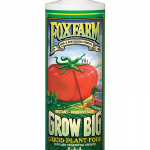Looking for a way to give your plants a boost? Fox Farm Grow Big is a popular fertilizer that can help your plants grow bigger and stronger. Editor’s Notes: Fox Farm Grow Big has been published today, [date]. This topic is important to read because it provides information on how to use Fox Farm Grow • Read More »
Archives: grow
Unveiling the Secrets: A Culinary Journey of Herb Gardening Delights
May 23, 2024 | By admin | No Comments | Filed in: herb garden.Growing your own herbs is a great way to add flavor and freshness to your cooking. But with so many different herbs to choose from, it can be hard to know which ones are the best to grow. That’s why we’ve put together this guide to the best herbs to grow for cooking. Editor’s Note: • Read More »
Unveiling Secrets: The Ultimate Guide to DIY Indoor Herb Gardens with Grow Lights
May 22, 2024 | By admin | No Comments | Filed in: herb garden.Thinking of growing your own herbs indoors? You’ll need a grow light to give your plants the light they need to thrive. Here’s everything you need to know about choosing and using a grow light for your indoor herb garden. Editor’s Note: This guide on “diy indoor herb garden with grow light” has been published • Read More »
Unveiling the Secrets of Herb Harmony: Discover the Best Herbs to Grow Together
May 19, 2024 | By admin | No Comments | Filed in: herb garden.What are the best herbs to grow together? This is a common question asked by gardeners of all levels of experience. The answer depends on a number of factors, including the climate, the amount of sunlight available, and the type of soil. However, there are some general guidelines that can help you choose the best • Read More »



